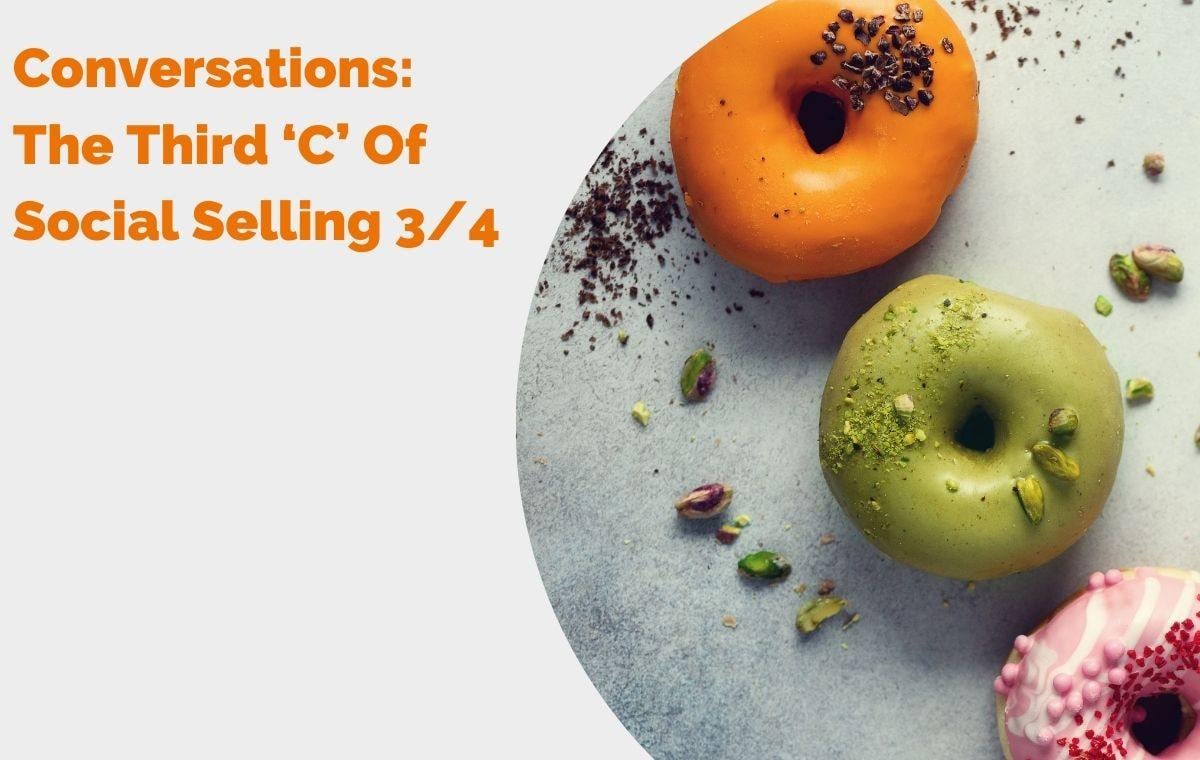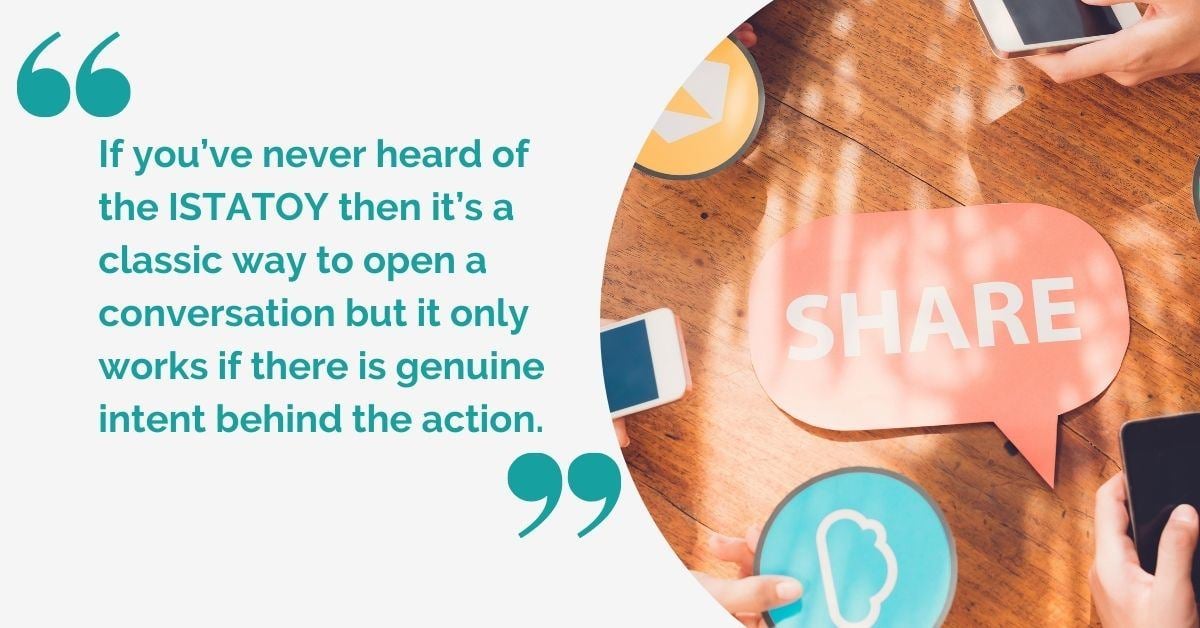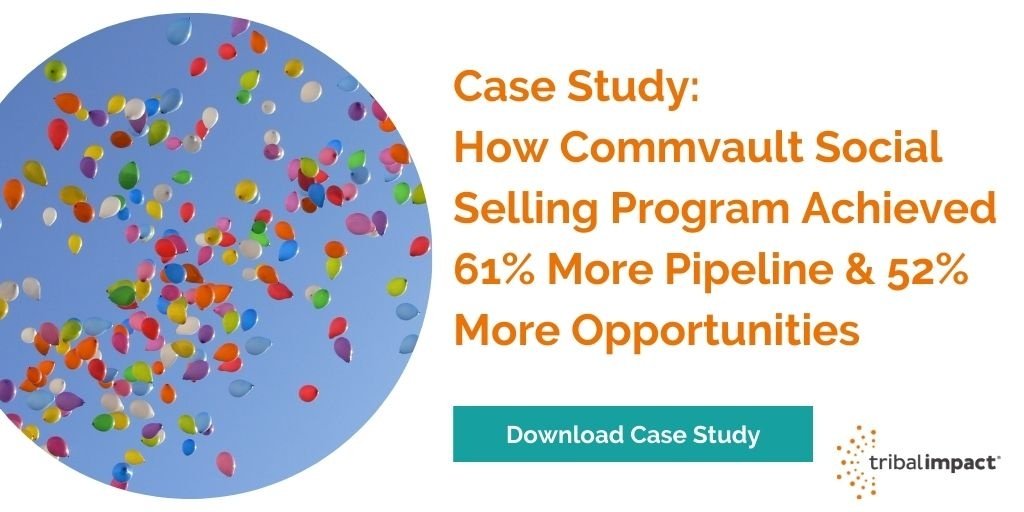
This is the third blog in a four-part series about the 4 C’s of Social Selling. In the last blog I talked a lot about connections – how automating that process can get you stuck in LinkedIn jail, how you can’t fast-track the process of relationship building and how content provides a lot of indicators that you can utilise to build connections. This time I’m focusing on the next step – Conversations.
Building a network of digital connections is a great first step in Social Selling. Nurturing them to the point of conversation is quite another. Many Social Sellers get stuck at this point, not knowing when or how to convert those connections into conversations – hence the third C in our blog series! And with platforms such as Twitter Spaces and Clubhouse emerging, conversational content is on the increase. But first, let’s explore the definition of a conversation:
Conversation noun
- informal interchange of thoughts, information, etc., by spoken words; oral communication between persons; talk:
Conversations happen between two or more people in which news and ideas are exchanged. However, this is also the reason why so many Social Sellers make mistakes because they:
- Send invitations to people sporadically and randomly
- Miss opportunities to open conversations
- Connect on LinkedIn and quickly start to pitch products and services
- Send invitations to connect without researching or personalising
- Claim to understand someone's business via a cold InMail
- Try to emulate traditional selling behaviours on social media
Opportunities are presenting themselves all the time over platforms like LinkedIn and Twitter but how do you turn those triggers into conversations.
Trigger Based Social Selling
In the second blog (Content to Connections) I talked a lot about identifying indicators – opportunities to send a connection request. Once connected, the eagle-eyed Social Seller will keep their eye firmly scanning for triggers which present opportunities to open conversations.
These opportunities are everywhere and for those with LinkedIn Sales Navigator, they become easier to identify using Lead Lists, Alerts and Notifications.
The real trick to trigger based social selling is to expect nothing. That’s right! Don’t have an agenda or expectation. Do these activities because it’s a nice thing to do or because it’s genuinely valuable for your connection. Here are just some of the triggers you should look out for:
Promotion Or New Role
Reaching out and congratulating someone in your network who starts a new role or gets a promotion is really a nice way to say hello. It’s also presents an opportunity for you to open a dialogue – not so you can sell but so you can learn. I have, rather unexpectedly, won a contract because of doing this.

Accepted LinkedIn Connection Request
When you accept a connection request, take the opportunity to write a short message to that person. Reference a connection you have in common or a piece of content they’ve written (assuming you’ve done your research before accepting their invitation!). It’s a nice way to start the digital relationship and you never know where that message might lead.
Liked And/Or Commented On Your Content
If someone has liked or commented on a post or tweet you’ve shared, you should always acknowledge their action – it’s polite. But also consider dropping them a line to say thank you and see how they’re doing. Try to recall when you last spoke or interacted and play it back to them – when it comes to relationship building, these little acts can go a long way.
Endorsed Or Recommended You
When someone endorses or recommends you on LinkedIn, take a moment to drop them a line to say thank you. These little acts of appreciation can open conversations. They may not directly lead to conversations about business but perhaps co-creating content together or a referral.
ISTATOY (I Saw This And Thought Of You)
If you’ve never heard of the ISTATOY then it’s a classic way to open a conversation but it only works if there is genuine intent behind the action. If you read an article or watch a video that makes you think of someone, then send it to them. I’m forever telling my kids that “sharing is caring” and in the case of the ISTATOY it certainly is. However, it loses impact if the content isn’t relevant to your connection.

There are many other ways to utilise triggers on LinkedIn and Twitter. If you know how to set up notifications and alerts in those platforms, you can be the first to answer questions, strengthen the relationship and facilitate a conversation.
What’s important to remember is that conversations reciprocal – where news and ideas are reciprocated. So, here’s a very simple rule to remember. Any time you reach out to someone in your network, whether to invite them to an event or bring their attention to an eBook, are you following these three simple rules:
- Are you providing something of value to them?
- Are you personalising every outreach – are you making it relevant to them?
- Are you utilising triggers and making the timing of your outreach convenient to them?
In my next blog I’ll explore conversations can turn into conversions. It’s important to realise that conversions don’t always come in the shape of multimillion dollar contracts. If you open your eyes to all the opportunities, you’ll be quite surprised!


